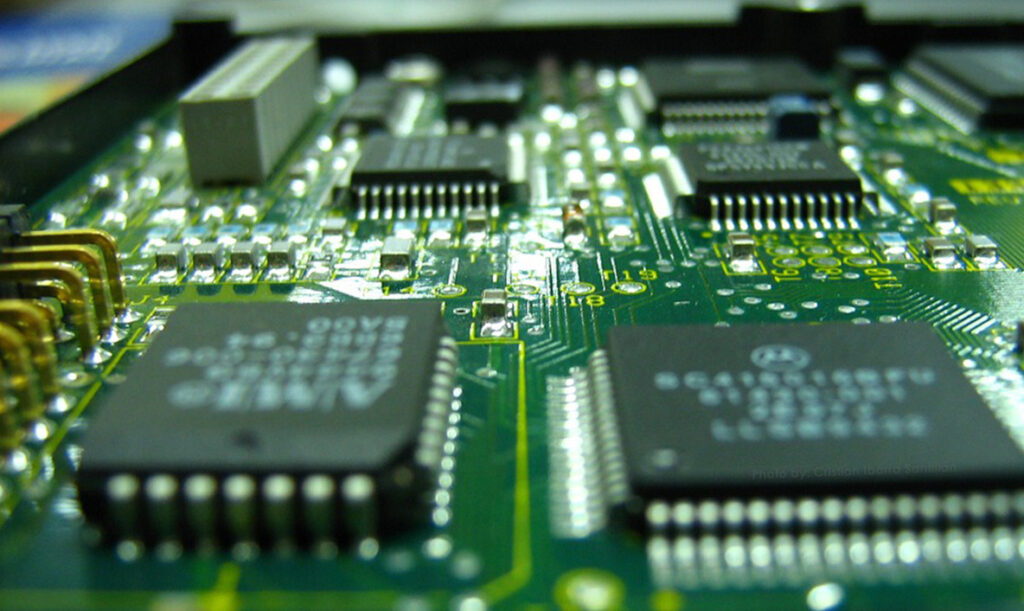A few nanometres
A few nanometres are the sinews of war in today’s industry, because a few nanometres is the size of a microprocessor. Microprocessors are the equivalent of the brain of a computer. It’s an electronic chip that executes instructions to perform various data processing tasks. They are therefore essential parts in the modern production of vehicles, computers, telephones, even washing machines. More generally, it includes all objects that contain an element of electronics.
In this article, CS actu will look at the main players in the production and trade of microprocessors, as well as understanding the geopolitical importance of such a resource.
Taiwan: the microprocessor capital of the world
Taiwan is a small island off the coast of China and is claimed by it. It is also the place where the most microprocessors in the world are produced. In fact, a company called TSMC, launched by Morris Chang and strongly supported by the Taiwanese government, was created on 21 February 1987. This company is the one that has enabled Taiwan to become the microprocessor capital of the world, with 30% of world production, because Taiwan has been improving its skills in this technology for over 30 years.
Of course, TSMC is not the only microprocessor company in the world. Other companies such as AMD, Intel and Samsung also innovate a great deal in this sector. However, TSMC produces 90% of the world’s most powerful microprocessors. The company has hundreds of customers around the world, including such household names as Apple and Nvidia.
Covid: a high demand for microprocessors
Microprocessors have not always been a central issue when it comes to the dependence of one country on another. This problem came to the fore during the covid period. During this period, demand for microprocessors increased dramatically, but supply failed to keep pace. Apple recorded a loss of 10 billion dollars and many car factories were closed. The countries of the world became brutally aware of how much they were spending on this resource.
Following this shock, the Americans reacted by promulgating the Chips Act on the 9th of August 2022. It aimed at creating jobs, being less dependent and keeping ahead of China. To achieve this, the US has allocated 280 billion dollars to research, including 52 billion for microprocessors alone. This represents the biggest public investment since the Second World War. This law also prohibits US companies from doing business with Huawei or Chinese microprocessor companies. One man who worked hard to get this law passed was Pat Gelsinger, CEO of Intel. He is the world’s second-largest producer of microprocessors, and part of President Joe Biden’s inner circle.
In this vein, the United States has managed to attract the Taiwanese giant TSMC, which, in addition to investing 12 billion dollars between 2021 and 2029 and launching the construction of a factory in Arizona during Donald Trump’s term in office in 2020, has launched the construction of a new factory. On Tuesday 6th of December 2022, Joe Biden travelled to Arizona to launch work on this famous factory. In all, TSMC will be investing a considerable €40 billion in the state.
The obstacles faced by the project
However, this major project is currently coming up against a number of obstacles. The first factory, which was announced with great fanfare by Donald Trump its the fact that first chips next year, will not actually be able to start production until 2025. The chairman of TSMC points to labour problems: « We are experiencing certain difficulties, because there are not enough skilled workers with the expertise required to install equipment in a semiconductor plant ». But that’s not all: life on the site is said to be complicated, there’s bad blood between management and workers, and the United States and TSMC are said to be fighting over funding for the site.
China and the European Union : important opponents?
The United States is not alone in this race for microprocessor independence. China has set itself the goal of becoming self-sufficient by 2025, thanks mainly to SMIC, China’s leading microprocessor company. To achieve this, China has been investing billions and billions for almost 40 years. Moreover, in reaction to TSMC’s investment in 2020 in the United States, SMIC has announced that it is investing $8.87 billion, with the help of the Chinese government, in a new factory in Shanghai that is due to produce 100,000 wafers a month for use in the production of household appliances, autonomous cars, etc.
Nevertheless, China’s goal still seems utopian. Today, China produces barely 15% of the electronic chips it consumes. It is sorely lacking in brains and production capacity. Moreover, China’s total investment in microprocessors may be in the billions, but this money is actually coming from local governments who want a factory in their town to gain power. The result is that an enormous amount of money is being spent needlessly and scattered all over China.
For its part, the EU has set itself a clear objective: to be able to produce 20% of the world’s output by 2030. But to achieve its target, Europe needs factories. In Dublin, an Intel plant started high-volume production on Friday 29th of September 2023 in its $18.5 billion factory. This first step is therefore a step towards the EU’s independence from microprocessors. It is important to note, however, that although this plant is located in Europe, it is not a European plant because it belongs to Intel.
But that’s not all: Intel is now also planning to build a large chip manufacturing complex in Germany and a semiconductor assembly and test facility in Poland. These projects will be encouraged by the European Union through more flexible funding and subsidy rules. A semiconductor manufacturing value chain will be created by these three facilities that will be the first of its kind in Europe. These investments, worth 35.5 billion dollars, will also affect France, Italy and Spain. However, Intel’s final target is to spend a total of 86 billion dollars in Europe. There will also be almost 46 billion dollars of public investment from the European Union and its member states.

Intel is not alone in investing in Europe. On Tuesday 8 August 2023, TSMC gave the go-ahead to set up a factory in Dresden in eastern Germany. This is a $10.7 billion project, in which TSMC will hold a 70% stake and will be working with Germany’s Infineon and Bosch, as well as the Netherlands’ NXP, which will each be involved to the tune of 10%.
In this way, Europe is seeking to reduce its dependence on the United States and Asia. However, because of the war in Ukraine, the old continent is facing an unstable situation when it comes to supplies of the raw materials needed to produce microprocessors, such as neon, which is mainly manufactured in Ukraine, and palladium, of which Russia is one of the main producers. We should also bear in mind that the United States seems to be going in it alone on this issue.










